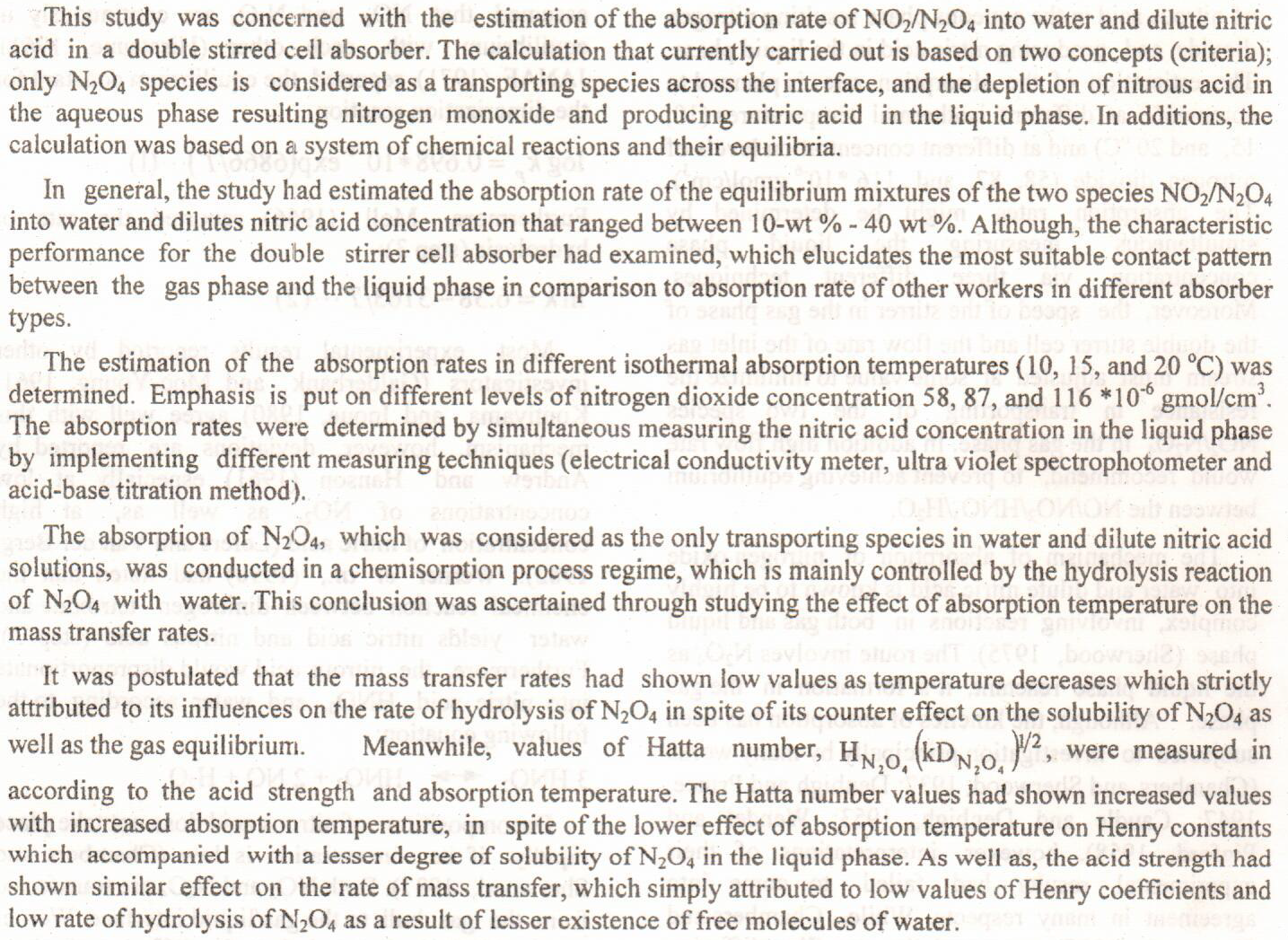
Sodium adsorption ratio (SAR) is considered as a measure of the water suitability for irrigation usage. This study examines the effect of the physicochemical parameters on water quality and SAR, which included Calcium(Ca+2), Magnesium(Mg+2), Sodium (Na+), Potassium (K), Chloride (Cl-), Sulfate(SO4-2), Carbonate (CO3-2), Bicarbonate (HCO3-), Nitrate (NO3-), Total Hardness (TH), Total Dissolved Salts (TDS), Electrical Conductivity (EC), degree of reaction (DR), Boron (B) and the monthly and annually flow discharge (Q). The water samples were collected from three stations across the Tigris River in Iraq, which flows through Samarra city (upstream), Baghdad city (central) and the end of Kut city (downstream) for the periods of 2016-201
... Show MoreThe corrosion behavior of low carbon steel in washing water of crude oil solution has been studied potentiostatically at five temperatures in the range (30–70)°C .The corrosion potential shifted to more negative values with increasing temperature and the corrosion current density increased with increasing temperature. Folic acid had on inhibiting effect on the corrosion of low carbon steel in washing water at a concentration (5× 10-4-- 5× 10-3 ) mol/dm3 over the temperature range (30–70)°C. Values of the protection efficiency were calculated from the corrosion current density .From the general results for this study, it can be seen that thermodynamic and kinetic function were also calculated (?G, ?S, ?H and Ea )
... Show More (3)
(3)
 (34)
(34)
The present work describes the adsorption of Ba2+ and Mg2+ions from aqueous solutions by activated alumina in single and binary system using batch adsorption. The effect of different parameters such as amount of alumina, concentration of metal ions, pH of solution, contact time and agitation speed on the adsorption process was studied. The optimum adsorbent dosage was found to be 0.5 g and 1.5 g for removal of Ba2+ and Mg2+, respectively. The optimum pH, contact time and agitation speed, were found to be pH 6, 2h and 300 rpm, respectively, for removal of both metal ions. The equilibrium data were analyzed by Langmuir and Freundlich isotherm models and the data fitted well to both isotherm modes as indicated by higher correlation of deter
... Show More (31)
(31)
 (31)
(31)
 (22)
(22)
 (12)
(12)
The physical and morphological characteristics of porous silicon (PS) synthesized via gas sensor was assessed by electrochemical etching for a Si wafer in diluted HF acid in water (1:4) at different etching times and different currents. The morphology for PS wafers by AFM show that the average pore diameter varies from 48.63 to 72.54 nm with increasing etching time from 5 to 15min and from 72.54 to 51.37nm with increasing current from 10 to 30 mA. From the study, it was found that the gas sensitivity of In2O3: CdO semiconductor, against NO2 gas, directly correlated to the nanoparticles size, and its sensitivity increases with increasing operating temperature.
 (8)
(8)
 (5)
(5)
In this work the structural, optical and sensitive properties of Cerium - Copper oxide thin film prepared on silicon and glass substrate by the spray pyrolysis technique at a temperature of (200, 250, 300 °C). The results of (XRD) showed that all the prepared films were of a polycrystalline installation and monoclinic crystal structure with a preferable directions was (111) of CuO. Optical characteristics observed that the absorption coefficient has values for all the prepared CuO: Ce% (104 cm-1) in the visible spectrum, indicating that all the thin films prepared have a direct energy gap. Been fabrication of gas sensors of (CuO: Ce %) within optimum preparation conditions and study sensitivity properties were examined her exposed to ni
... Show More (1)
(1)
